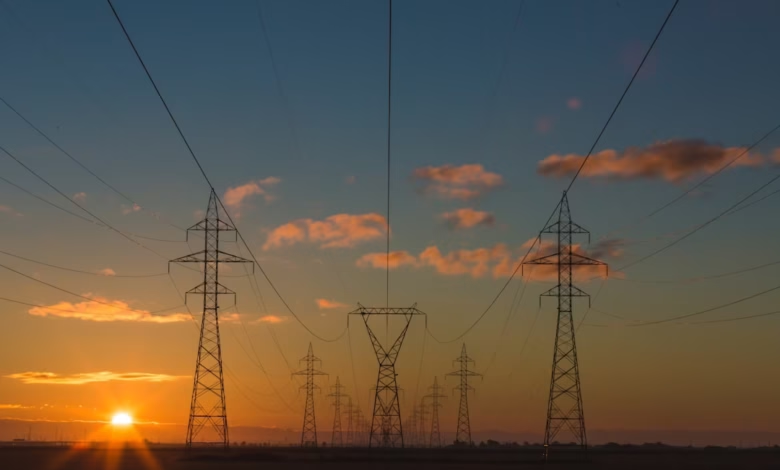Shaping the Future: Energy Policy and Regulation for a Sustainable Transition to Renewable Energy

As the world faces the pressing challenges of climate change and resource depletion, energy policy and regulation have emerged as crucial components in managing the transition towards a sustainable future. Governments around the globe are implementing a variety of rules and initiatives aimed at promoting energy efficiency, fostering renewable energy development, and ensuring energy security. This article delves into the intricacies of energy policy, exploring key regulations and initiatives that are shaping our energy landscape.
We will examine the pivotal role of renewable energy sources such as solar power, wind energy, hydropower, and bioenergy in driving global energy trends and influencing policy frameworks. Additionally, we will highlight innovations in energy management, from smart grids that enhance energy efficiency to carbon capture technologies that mitigate emissions. By understanding these dynamics, we can better navigate the complex energy markets and make informed decisions about energy investments, energy exports, and imports. Join us as we explore the multifaceted world of energy policy and regulation, and discover how these efforts are paving the way for a resilient and sustainable energy transition.
- 1. Navigating Energy Policy: Key Regulations and Initiatives for a Sustainable Energy Transition
- 2. The Role of Renewable Energy in Shaping Global Energy Trends and Policy Frameworks
- 3. Innovations in Energy Management: From Smart Grids to Carbon Capture Technologies
1. Navigating Energy Policy: Key Regulations and Initiatives for a Sustainable Energy Transition
Navigating energy policy is crucial for facilitating a sustainable energy transition, particularly in the context of increasing global energy trends and the urgent need to combat climate change. Governments around the world are implementing various regulations and initiatives aimed at transforming energy markets and promoting renewable energy sources. These policies focus on the integration of green energy technologies, such as solar power, wind energy, and hydropower, into national energy frameworks.
Key regulations often include incentives for energy efficiency and investments in energy storage solutions, which are vital for managing the intermittency of renewable energy sources. For instance, energy efficiency standards for electric vehicles and buildings not only reduce fossil fuel dependency but also enhance energy security by lowering overall energy demand.
In addition to efficiency initiatives, many governments are fostering energy innovations through research and development (R&D) in areas like hydrogen energy, carbon capture, and smart grids. These technologies are essential for transitioning away from traditional fossil fuels and enabling a more resilient energy infrastructure. Smart grids, in particular, enhance energy transportation and distribution, allowing for a balanced mix of thermal energy, nuclear energy, and renewable energy sources.
Another critical aspect of energy policy is the promotion of distributed energy systems, which empower local communities to generate and manage their own energy. This decentralization increases energy resilience and supports the integration of offshore energy projects, bioenergy, and thermal energy into the broader energy landscape.
Energy investment is also a focal point of many government initiatives, as funding for renewable energy projects and energy exports can significantly impact energy markets. By prioritizing investments in clean energy technologies, countries can position themselves as leaders in the global energy economy while simultaneously addressing the challenges posed by energy imports and exports.
Ultimately, navigating energy policy requires a comprehensive understanding of energy economics and a commitment to fostering a sustainable energy transition. Governments must balance the need for reliable energy supply with environmental considerations, ensuring that the shift towards greener alternatives does not compromise energy security. Through collaborative efforts and innovative solutions, a successful transition to a sustainable energy future is within reach.
2. The Role of Renewable Energy in Shaping Global Energy Trends and Policy Frameworks
The shift towards renewable energy is significantly reshaping global energy trends and influencing policy frameworks worldwide. As governments and organizations recognize the urgent need to address climate change, renewable energy sources such as solar power, wind energy, hydropower, and bioenergy are increasingly becoming central to energy policy discussions. This transition is not only driven by environmental concerns but also by the desire to enhance energy security and reduce reliance on fossil fuels.
Renewable energy plays a vital role in the energy transition, as it offers sustainable alternatives that can help mitigate greenhouse gas emissions. The integration of renewables into energy markets is facilitated by advancements in energy storage technologies, which enhance the reliability and efficiency of energy systems. Smart grids are also emerging as essential components of modern energy infrastructure, enabling the effective management of distributed energy resources and facilitating the integration of electric vehicles into the energy ecosystem.
Government initiatives aimed at promoting energy efficiency and reducing carbon footprints are influencing energy investments. Policies that support innovations in energy R&D, such as carbon capture and hydrogen energy technologies, are essential for creating a resilient energy landscape. Furthermore, the diversification of energy sources, including offshore energy projects, supports energy imports and exports, bolstering economic stability and energy economics.
As countries strive to meet their climate goals, the collaboration between public and private sectors is crucial for advancing energy innovations. This collective effort is reshaping the energy policy landscape to prioritize renewable energy, thus encouraging a shift from traditional thermal energy sources to greener alternatives. By investing in renewable energy infrastructure, nations can achieve sustainable energy management that aligns with global energy trends and promotes a healthier planet for future generations.
3. Innovations in Energy Management: From Smart Grids to Carbon Capture Technologies
Innovations in energy management are crucial for addressing global energy trends and facilitating the energy transition towards a more sustainable and efficient future. Technologies such as smart grids and carbon capture are at the forefront of this evolution, transforming the way energy is produced, distributed, and consumed.
Smart grids are revolutionizing energy management by integrating advanced communication and control technologies into the traditional electrical grid. This innovation allows for real-time monitoring and management of energy flows, enhancing energy efficiency and reliability. By enabling two-way communication between consumers and energy providers, smart grids facilitate the integration of renewable energy sources like solar power and wind energy, which are essential for reducing reliance on fossil fuels. These systems also support distributed energy generation, allowing households and businesses to generate their own power and contribute to energy security.
Carbon capture technologies play a vital role in mitigating the effects of climate change. By capturing carbon dioxide emissions from sources such as thermal energy plants and industrial processes, these technologies help reduce greenhouse gas emissions while allowing for continued use of fossil fuels during the transition to greener alternatives. Innovations in carbon capture not only support energy policy goals but also open up new energy markets focused on cleaner energy exports.
In addition to smart grids and carbon capture, energy storage technologies are critical innovations that enhance the reliability of renewable energy. With the intermittent nature of sources like solar and wind energy, effective energy storage solutions allow excess energy to be stored and used when production is low, thereby improving energy efficiency and stability in energy transportation.
Hydrogen energy is another promising innovation in energy management. As a versatile energy carrier, hydrogen can be produced from various sources, including renewable energy through electrolysis. Its potential applications range from powering electric vehicles to providing a clean alternative for industrial processes that traditionally rely on fossil fuels.
As governments and private sectors increase their energy investment in research and development (R&D), the landscape of energy management continues to evolve. This commitment is essential for achieving a sustainable energy future that prioritizes green energy sources while ensuring energy security. By embracing these innovations, we can effectively address the challenges posed by climate change and transition towards a more resilient energy system.
In conclusion, navigating the complexities of energy policy and regulation is essential for fostering a sustainable energy transition that addresses the pressing challenges of climate change and energy security. As governments worldwide implement key regulations and initiatives, the focus on renewable energy sources such as solar power, wind energy, and hydropower is reshaping global energy trends and policy frameworks. Innovations in energy management, including smart grids and carbon capture technologies, are paving the way for enhanced energy efficiency and reliability while minimizing our reliance on fossil fuels and nuclear energy.
The integration of distributed energy systems and robust energy storage solutions will play a crucial role in optimizing energy markets and ensuring a steady supply of green energy. As we invest in energy R&D and embrace innovations like thermal energy, hydrogen energy, and bioenergy, we can unlock new pathways for energy transportation and exports. Moreover, the rise of electric vehicles and offshore energy development signifies a shift towards a more sustainable energy future.
Ultimately, effective energy policy will require a collaborative approach that balances environmental goals with economic growth and energy investment. By prioritizing energy innovations and sustainable practices, we can create a resilient energy landscape that not only meets the needs of today but also secures a cleaner, greener tomorrow for future generations.





